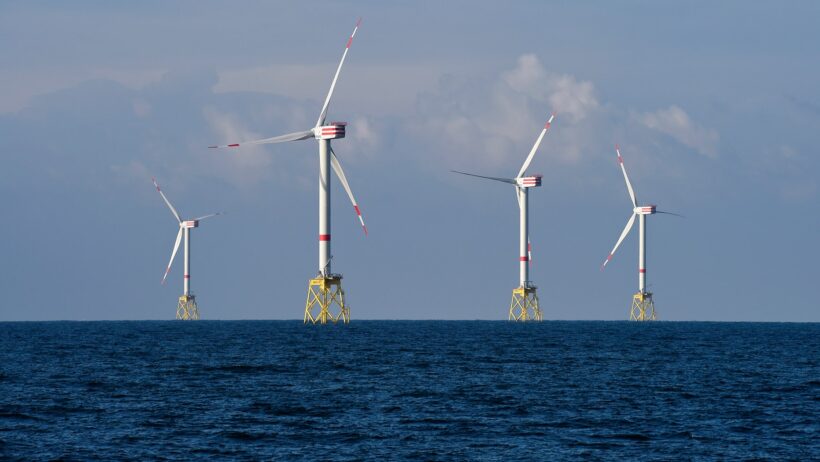The quest to mitigate climate change has been likened to steering a colossal ship through a stormy sea. As the waves of greenhouse gas emissions surge, renewable energy emerges as a beacon promising refuge. Yet, the question looms: can this alternative energy source indeed halt the catastrophic trajectory of global warming? Scholars and experts delve into this multifaceted issue, offering a spectrum of insights and perspectives that illuminate the complexities of relying solely on renewable energy.
To begin with, it is essential to comprehend what renewable energy entails. Encompassing sources such as solar, wind, hydroelectric, and geothermal power, renewable energy harnesses natural phenomena, providing a stark contrast to fossil fuels which emit significant volumes of carbon dioxide upon combustion. The allure lies in its potential for sustainability—a clean, inexhaustible form of energy that could pave the way towards a resilient future.
However, this utopian vision is fraught with intricacies. One prevailing argument among scholars is rooted in the notion of energy transition. Shifting from fossil fuels to renewable energy is akin to a metamorphosis; it is a lengthy, arduous process that faces numerous barriers, both technological and societal. Changes in infrastructure, investment in research and development, and public acceptance are all vital components in this transformation. An eminent scholar notes that while the adoption of renewable technologies is accelerating, it must harmonize with a simultaneous reduction in fossil fuel usage to achieve significant and enduring climate change mitigation.
Moreover, a crucial consideration arises from intermittency—the capacity of renewable sources to produce energy unfailingly. Wind and solar energy derive their efficacy from weather conditions, which can be unpredictable. Scholars argue that reliance on these sources necessitates innovative solutions, such as energy storage systems, grid enhancements, and diversified energy portfolios. When viewed through this lens, renewable energy becomes not a panacea, but rather a vital component of a multifaceted strategy required to combat climate change.
In addition, an analysis of the lifecycle carbon emissions related to renewable technologies unveils another layer of complexity. While the energy generated during their operational phase is considerably lower in emissions compared to fossil fuels, the production, installation, and eventual decommissioning of renewable energy systems can contribute to their overall carbon footprint. This raises the pertinent inquiry: are we merely shifting emissions from one sector to another? Scholars emphasize the importance of transparent lifecycle assessments to ensure that the shift toward renewables is indeed leading towards genuine carbon reductions.
Furthermore, the socio-economic ramifications of transitioning to renewable energy cannot be overlooked. While a renewable energy economy offers the promise of job creation and economic revitalization, it also risks exacerbating inequality if not approached judiciously. Scholars advocate for a just transition, emphasizing that the shift must be inclusive, ensuring that vulnerable communities, particularly those historically reliant on fossil fuel industries, are not left behind. This equitable approach could engender broader support for renewable initiatives, subsequently amplifying their potential impact on climate change mitigation.
Even amid these challenges, captivating narratives of success highlight the transformative potential of renewable energy. Countries like Denmark and Germany showcase the success of robust policy frameworks and strategic investments in renewables, achieving significant reductions in carbon emissions while bolstering economic growth. These cases reflect that renewable energy, when layered with appropriate policies and stakeholder engagement, could serve as a formidable ally in the battle against climate change.
Transcending national borders, the global potential of renewable energy is immense. Scholars emphasize the role of international cooperation in scaling up renewable technologies, particularly in developing nations where access to energy remains a critical hurdle. The decentralized nature of renewable energy enables local communities to generate power, empowering them and fostering resilience against climate impacts. This phenomenon manifests the most profound metaphorical allure of renewable energy—it can transform communities from passive consumers of energy into active stewards of their own destinies.
Integrating renewable energy into a holistic climate strategy also necessitates examining consumption patterns. Scholars argue that merely shifting to renewables without addressing the broader context of consumption and waste will limit progress. Energy efficiency measures, sustainable agricultural practices, and circular economies are essential complementary strategies that fortify the efforts towards climate stabilization. As the ship navigates the tumultuous waters of climate change, every sailor must contribute to adjusting the sails—engaged citizens, forward-thinking policymakers, innovative businesses, and committed scholars alike.
In conclusion, while the promise of renewable energy glimmers like a distant lighthouse amidst the fog of climate change, it is not a panacea. The duality of its capacity to mitigate climate change and its inherent challenges necessitates a multifaceted approach. Scholars advocate for a symbiotic relationship among various technologies, policies, and societal engagement to holistically address the climate crisis. In this complex tapestry, renewable energy undeniably constitutes a pivotal thread—its potential to illuminate the path forward is undeniable, yet it must be woven judiciously with other strategies to create a resilient tapestry capable of withstanding the exigencies of climate change.







